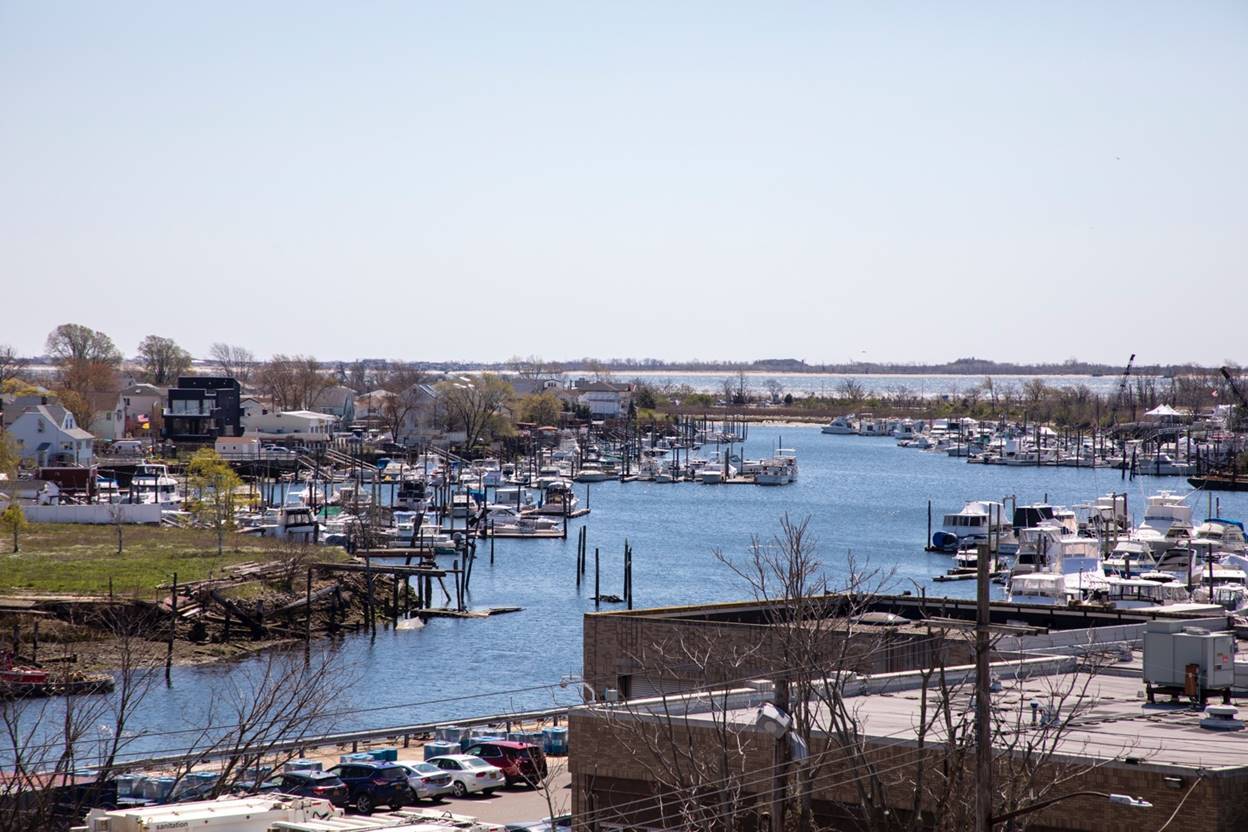$110 Million Upgrade of Coney Island Wastewater Resource Recovery Facility Will Ensure Continued Protection of Local Waterways While Also Improving Energy Efficiency
July 6, 2021
The New York City Department of Environmental Protection (DEP) today announced that work is under way on a $110 million reliability and energy efficiency upgrade at the Coney Island Wastewater Resource Recovery Facility in southern Brooklyn. As part of the project, a new main sewage pump system will be installed which will consume 20 percent less electricity and increase system reliability and resiliency. This operational efficiency will reduce annual greenhouse gas emissions by 500 metric tons, the equivalent of taking 109 passenger cars off the road. These upgrades will also yield an annual savings of nearly a quarter of a million dollars in operating costs. Construction began earlier this year and will be staged so that the facility continues to operate around the clock. It is anticipated that the work will be completed in 2025.
“The Coney Island Wastewater Resource Recovery Facility cleans more than 110 million gallons of wastewater from nearly 600,000 Brooklyn residents every day of the year and protects the waterways and beaches in the area,” said DEP Commissioner Vincent Sapienza. “This work is essential to reducing our carbon footprint, improving air quality, lowering operating costs and ensuring the treatment facility remains in a state of good repair for decades to come.”
“At a time when more intense heat waves and stronger storms are becoming the norm, we must ensure our infrastructure is greener and more resilient to prepare for a warming world. The new and improved Coney Island Wastewater Resource Recovery Facility meets both of these goals, and sets the standard for infrastructure across the city and state. I thank DEP for their partnership on this critical project,” said Brooklyn Borough President Eric Adams.
“This important facility upgrade will not only decrease our climate-warming emissions, it will also provide much needed resilience to our Central and South Brooklyn communities in the face of more extreme weather and sea-level rise due to the climate crisis,” said Congresswoman Yvette D. Clarke. “I will continue to fight in Congress to ensure that our communities get the resources we need to invest in greener and more resilient infrastructure.”
“The ability to provide for efficiency in conserving electricity and to promote goals of environmental protection are paramount to not only the 59th Assembly District, but all of New York! The DEP’s endeavor will assuredly help promote these most important goals,” said Assembly Member Jaime Williams.
This project will replace the Main Sewage Pumps (MSP) system, which was built in the 1980s and has operated continuously for more than 30 years. The system and its associated motors, suction and discharge piping, valves, motor starters and associated electrical equipment and controls are due for replacement. Upgrades at the facility will include the facility’s six main sewage pumps, discharge piping, force main, and valves in the existing dry well. New motors, controllers and associated electrical equipment will also be provided for the pump system.
The new electrical equipment will be housed in a new electrical room constructed inside the existing Pump and Power Building. HVAC work includes new air conditioning equipment for the new electrical room, replacement-in-kind of louvers on the Pump and Power Building, and replacement-in-kind of louvers, duct and exhaust fans in the Screenings Handling Building. To facilitate construction while still maintaining facility operations, a submersible pump system will be installed in the existing subgrade wet wells in the courtyard area situated between the Pump and Power Building and the Screenings Handling Building.
Once completed, the upgraded MSP will provide reliable sewage pumping capacity for the next 30-plus years, improving public health and wastewater treatment reliability to the surrounding community, as well as improving the facility’s energy efficiency by 20 percent through engineering design improvements.
The Coney Island Wastewater Resource Recovery Facility serves a 15,087 acre drainage area in southern and central Brooklyn. The facility manages wastewater influent flows of 110 million gallons per day during dry weather flow, and a total maximum wet weather flow of 220 million gallons per day.
DEP manages New York City’s water supply, providing approximately 1 billion gallons of high quality drinking water each day to more than 9 million residents, including 8.3 million in New York City. The water is delivered from a watershed that extends more than 125 miles from the city, comprising 19 reservoirs and three controlled lakes. Approximately 7,000 miles of water mains, tunnels and aqueducts bring water to homes and businesses throughout the five boroughs, and 7,500 miles of sewer lines and 96 pump stations take wastewater to 14 in-city treatment plants. DEP has nearly 6,000 employees, including almost 1,000 in the upstate watershed. In addition, DEP has a robust capital program, with a planned $20.1 billion in investments over the next 10 years that will create up to 3,000 construction-related jobs per year. For more information, visit nyc.gov/dep, like us on Facebook, or follow us on Twitter.





